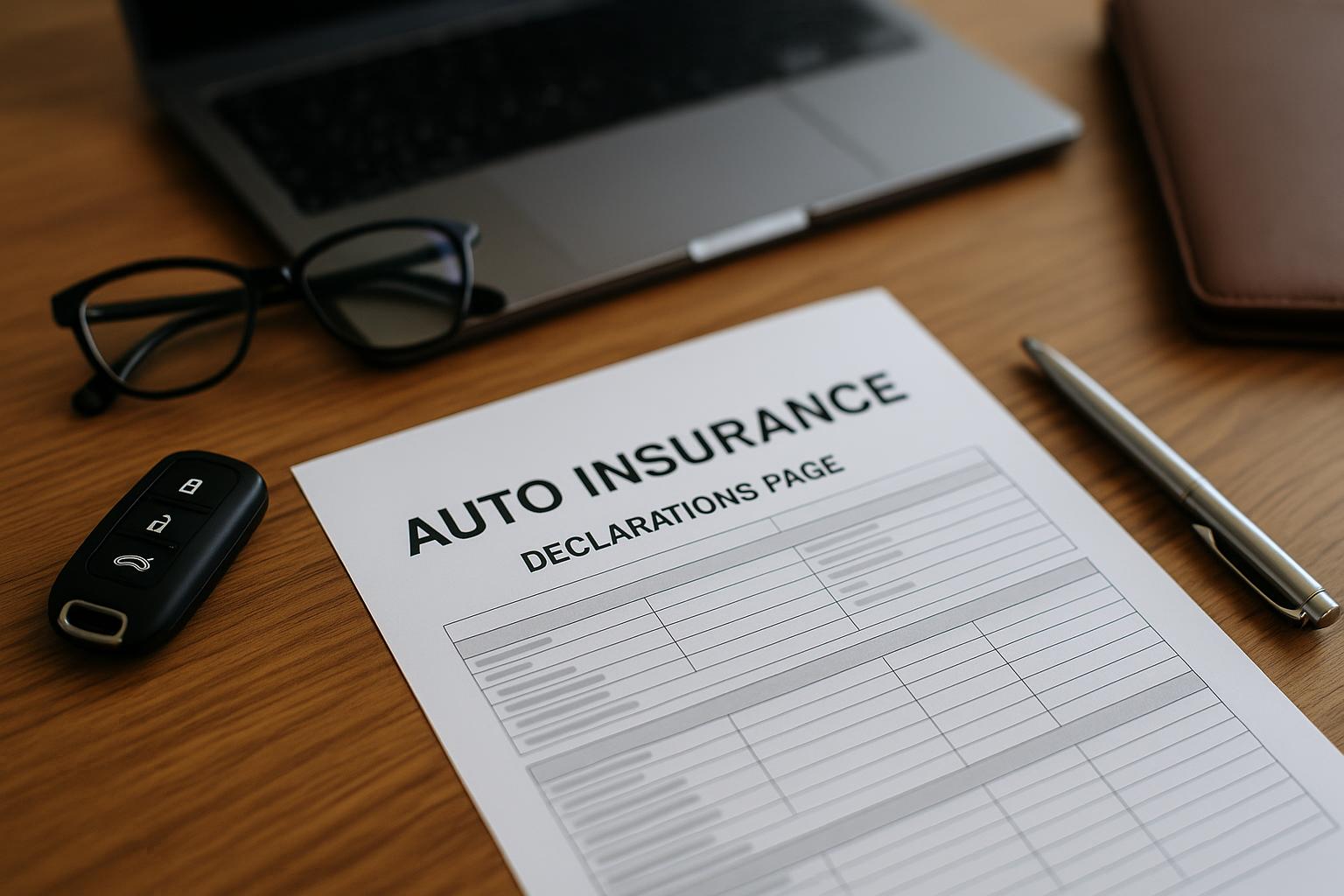Your Policy’s Blueprint: Why This Document Matters
When you purchase car insurance, you receive a packet of documents that can feel overwhelming. Among them, the auto insurance declarations page is the single most important summary of your coverage. Often called the “dec page,” it’s a one- to two-page overview that outlines who is covered, what vehicles are insured, the types of coverage you have selected, and how much you are paying. For drivers in Boise, Meridian, and across Idaho, understanding this document is critical not just for compliance with state law, but for ensuring you and your family are adequately protected after an accident.
Think of it as the receipt and the contract summary for your insurance policy. If you’re ever involved in a collision, this is the first document you, your attorney, and insurance adjusters will reference to understand the scope of your financial protection. Misinterpreting or overlooking details on this page can lead to discovering you’re underinsured when you need the coverage most.
Decoding Your Declarations Page: A Section-by-Section Breakdown
Policy Information
This top section contains the basics. You’ll find your policy number, the effective dates of the policy period (usually six or twelve months), and the name and contact information for your insurance company and agent. Always verify this information is correct, especially the policy period, to avoid any lapse in coverage.
Named Insured(s) and Drivers
This lists the primary policyholder (the “named insured”) and their mailing address. It will also list all other licensed drivers in your household who are covered under the policy. It is crucial that every regular operator of your vehicles is listed here. Failing to include a household member who drives your car could result in a denied claim.
Insured Vehicles
Here, you will see a detailed list of all vehicles covered by the policy. Each entry includes the year, make, model, and Vehicle Identification Number (VIN). Review this section carefully for accuracy. If you’ve recently bought or sold a car, make sure the change is reflected here. The coverages you select often apply to specific vehicles, so correct information is vital.
Coverages, Limits, and Premiums
This is the core of your declarations page. It details the specific types of coverage you have for each vehicle, the limits of that coverage, and the premium (cost) for each. This section can be confusing, so let’s break down the common coverages you’ll see in Idaho:
- Liability Coverage: This is mandatory in Idaho and covers damages you cause to others. It’s typically shown as three numbers (e.g., 25/50/15). This translates to: Bodily Injury Liability per person / Bodily Injury Liability per accident / Property Damage Liability per accident.
- Uninsured/Underinsured Motorist (UM/UIM): This protects you if you’re hit by a driver with no insurance or not enough insurance to cover your injuries. While not required, it is highly recommended.
- Medical Payments (MedPay): Covers medical expenses for you and your passengers after an accident, regardless of who is at fault.
- Collision: Pays for damage to your own vehicle from a collision with another object or from flipping over. This coverage is subject to a deductible.
- Comprehensive: Pays for damage to your vehicle from non-collision events like theft, vandalism, fire, or hitting an animal. This also has a deductible.
Deductibles
Your deductible is the amount you must pay out-of-pocket for a collision or comprehensive claim before your insurance pays the rest. A higher deductible typically means a lower premium, but it also means more financial responsibility for you after an accident. This amount will be clearly listed next to your collision and comprehensive coverages.
Endorsements and Discounts
This final section lists any add-ons or modifications to your standard policy, known as endorsements (like roadside assistance or rental reimbursement). It will also itemize any discounts you are receiving, such as for safe driving, good student, or bundling policies. It’s a good idea to review this to ensure you’re getting all the discounts you qualify for.
Meeting Idaho’s Legal Requirements and Beyond
In Idaho, all drivers are legally required to carry liability insurance. The state minimums are:
- $25,000 for bodily injury or death to one person
- $50,000 for bodily injury or death to two or more people in a single accident
- $15,000 for property damage
While meeting these minimums keeps you legal, they are often insufficient to cover the costs of a serious accident. A single car accident can easily result in medical bills and property damage far exceeding these amounts, leaving you personally responsible for the difference. Reviewing your declarations page is an opportunity to assess whether you should purchase higher limits for greater financial protection. After a serious accident, having robust coverage can be the difference between financial stability and ruin.
If you’ve been injured in an accident, understanding the at-fault party’s coverage—and your own—is one of the first steps. This is where an experienced personal injury attorney can provide critical guidance.
Have You Been Injured in an Accident?
Insurance policies can be complex, and dealing with adjusters after an accident adds even more stress. The team at Shep Law Group is here to help you navigate your claim and fight for the compensation you deserve. We serve clients in Boise, Meridian, and across Idaho.
Frequently Asked Questions
What should I do if I find an error on my declarations page?
Contact your insurance agent immediately. Errors in your name, address, listed vehicles, or coverage amounts can cause significant problems when filing a claim. It’s best to correct any inaccuracies as soon as you spot them.
How often will I receive a new declarations page?
You will receive a new declarations page every time your policy renews (typically every six or twelve months). You will also receive an updated page anytime you make a change to your policy, such as adding a vehicle or changing your coverage.
Where can I find my declarations page?
Your insurer will typically mail you a printed copy when your policy begins or renews. Most companies also make it available online through your customer portal or mobile app, allowing you to download or print it anytime.
Is the declarations page the same as my insurance card?
No. Your insurance card is a small, portable proof of insurance that you must keep in your vehicle. The declarations page is a more detailed summary of your complete policy and is not meant to be used as proof of insurance during a traffic stop.
Glossary of Insurance Terms
Declarations Page: A summary document that provides the key details of your auto insurance policy, including who and what is covered, the policy period, and the coverage limits.
Deductible: The amount of money you are responsible for paying toward a covered loss before your insurance company starts to pay.
Endorsement: An amendment or addition to an insurance policy that changes its original terms, often to add or remove coverage.
Liability Coverage: Insurance that pays for injury or damage you cause to other people and their property. It does not cover your own injuries or property damage.
Premium: The amount of money you pay to the insurance company to keep your policy active.
VIN (Vehicle Identification Number): A unique 17-character code that identifies a specific vehicle.




